Related Research Articles
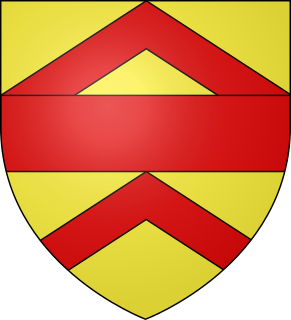
Baron FitzWalter is an ancient title in the Peerage of England. It was created on 24 June 1295 for Robert FitzWalter. The title was created by writ, which means that it can descend through both male and female lines. His great-grandson, the fourth Baron, was an Admiral of the Fleet. The fourth baron's grandson, the seventh Baron, was succeeded by his daughter and only child, Elizabeth. She was the wife of John Radcliffe. Their son, the ninth Baron, was attainted for treason in 1495 with his title forfeited. However, his son Robert Radcliffe obtained a reversal of the attainder by Act of Parliament in 1509 and later served as Lord Lieutenant of Lancashire. He was created Viscount FitzWalter in 1525 and Earl of Sussex in 1529. His grandson, the third Earl, was summoned to the House of Lords through a writ of acceleration in 1553 in his father's junior title of Baron FitzWalter. Lord Sussex later served as Lord Deputy of Ireland. He was succeeded by his younger brother, the fourth Earl. He had earlier represented Maldon, Hampshire and Portsmouth in the House of Commons and also served as Lord Lieutenant of Hampshire. When he died the titles passed to his only child, the fifth Earl. He was Lord Lieutenant of Essex.
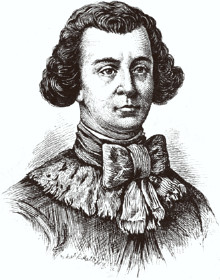
Earl of Limerick is a title that has been created twice in the Peerage of Ireland, associated first with the Dongan family, then with the Pery family.

Viscount Runciman of Doxford, of Doxford in the County of Northumberland, is a title in the Peerage of the United Kingdom. It was created in 1937 for the Hon. Walter Runciman, a politician whose career included service as a Member of Parliament, President of the Board of Trade and Lord President of the Council. He was the son and heir apparent of the shipping magnate and Liberal politician Walter Runciman, who had been created a Baronet in the Baronetage of the United Kingdom in 1906 and Baron Runciman, of Shoreston in the County of Northumberland, in 1933, also in the Peerage of the United Kingdom. As his father was still alive at the time of the creation of the viscountcy the title of this peerage was Runciman of Doxford rather than simply Runciman. As of 2017 the titles are held by the first Viscount's grandson, the third Viscount, who succeeded his father in 1989. He is a well-known sociologist at the University of Cambridge.
Baron Hives, of Duffield in the County of Derby, is a title in the Peerage of the United Kingdom. It was created 7 July 1950 for the Ernest Hives, Chairman of Rolls-Royce Ltd. As of 2010 the title is held by his grandson, the third Baron, who succeeded his uncle in 1997.
Baron Gisborough, of Cleveland in the County of York, is a title in the Peerage of the United Kingdom. It was created in 1917 for the Conservative politician Richard Chaloner, who had previously represented Westbury and Abercromby in the House of Commons. Born Richard Long, the son of Richard Penruddocke Long, he had assumed by Royal licence the surname of Chaloner in lieu of Long in 1881, as a condition of inheriting the Guisborough estate and Gisborough Hall from his maternal great-uncle, Admiral Thomas Chaloner. The latter was a descendant through his mother of Robert de Brus, who founded Gisborough Priory in 1119. Lord Gisborough's eldest son and heir Richard Godolphin Hume Long Chaloner was accidentally killed in France in 1917 while guarding German prisoners of war, and is buried at Calais. He was therefore succeeded by his second son, the second Baron. As of 2011 the title is held by the latter's son, the third Baron, who succeeded in 1951. He notably served as Lord Lieutenant of Cleveland from 1981 to 1996. The title remains strongly linked with the town of Guisborough.

Baron Grimston of Westbury, of Westbury in the County of Wiltshire, is a title in the Peerage of the United Kingdom. It was created in 1964 for the Conservative politician and former Deputy Speaker of the House of Commons, Sir Robert Grimston, 1st Baronet. He had already been created a baronet in 1952. Grimston was the son of Reverend Canon the Hon. Robert Grimston, third son of James Grimston, 2nd Earl of Verulam. As of 2017 the titles are held by his grandson, the third Baron, who succeeded his father in 2003.
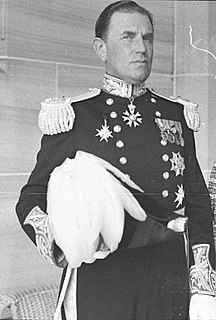
Baron Wakehurst, of Ardingly in the County of Sussex, is a title in the Peerage of the United Kingdom. It was created in 1934 for the Conservative politician Gerald Loder, fifth son of Sir Robert Loder, 1st Baronet. He had previously represented Brighton in the House of Commons and was the creator of Wakehurst Place Gardens in Ardingly, West Sussex. His only son, the second Baron, was also a Conservative politician and served as Governor of New South Wales and later as Governor of Northern Ireland. As of 2010 the title is held by the latter's eldest son, the third Baron, who succeeded in 1970. As a descendant of Sir Robert Loder, 1st Baronet, he is also in remainder to this title.

Baron Northbourne, of Betteshanger in the County of Kent, is a title in the Peerage of the United Kingdom. It was created in 1884 for Sir Walter James, 2nd Baronet, who had earlier represented Hull in the House of Commons as a Conservative. His son, the second Baron, sat as a Liberal Member of Parliament for Gateshead. The latter's great-grandson, the fifth Baron, who succeeded his father in 1982, was one of the ninety elected hereditary peers that were allowed to remain in the House of Lords after the passing of the House of Lords Act 1999, and sat as a cross-bencher until his retirement in 2018. As of 2019, the titles are held by his son, the sixth baron, who succeeded his father in that year.

Baron Phillimore, of Shiplake in the County of Oxford, is a title in the Peerage of the United Kingdom. It was created in 1918 for the former Judge of the High Court of Justice and Lord Justice of Appeal, Sir Walter Phillimore, 2nd Baronet. The Phillimore Baronetcy, of The Coppice, had been created in the Baronetage of the United Kingdom on 28 December 1881 for his father Sir Robert Phillimore, who was also a noted lawyer and judge. The first Baron was succeeded by his son, the second Baron.

Baron Montagu of Beaulieu, in the County of Hampshire, is a title in the Peerage of the United Kingdom and the Noble House of Montagu. It was created in 1885 for the Conservative politician Lord Henry Montagu Douglas Scott, who had earlier represented Selkirkshire and South Hampshire in the House of Commons. He was the second son of Walter Montagu Douglas Scott, 5th Duke of Buccleuch. His son, the second Baron, sat as a Conservative Member of Parliament for New Forest. The 3rd Baron Montagu of Beaulieu was one of the ninety elected hereditary peers that remain in the House of Lords after the passing of the House of Lords Act 1999, and sat on the Conservative benches. As descendants of the 5th Duke of Buccleuch, the Barons Montagu of Beaulieu are also in remainder to this peerage and its subsidiary titles.

Baron Brain, of Eynsham in the County of Oxford, is a title in the Peerage of the United Kingdom. It was created on 26 January 1962 for the physician and neurologist Sir Russell Brain, 1st Baronet. He had already been created a Baronet, of Reading in the County of Berkshire, on 29 June 1954. As of 2014 the titles are held by his youngest son, the third Baron, who succeeded in that year. He is a retired physician and a former Professor of Medicine at McMaster University, Canada.
Baron Cunliffe, of Headley in the County of Surrey, is a title in the Peerage of the United Kingdom. It was created in 1914 for Walter Cunliffe, Governor of the Bank of England from 1913 to 1918. As of 2010 the title is held by his grandson, the third Baron, who succeeded his father in 1963.

Baron Rothschild, of Tring in the County of Hertfordshire, is a title in the Peerage of the United Kingdom. It was created in 1885 for Sir Nathan Rothschild, 2nd Baronet, a member of the Rothschild banking family. He was the first Jewish member of the House of Lords not to have previously converted to Christianity. The current holder of the title is Jacob Rothschild, 4th Baron Rothschild, who inherited the title in 1990.
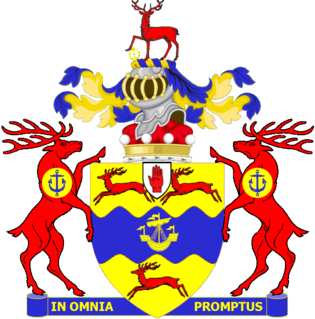
Baron Rea, of Eskdale in the County of Cumberland, is a title in the Peerage of the United Kingdom. It was created in 1937 for the businessman and Liberal politician Sir Walter Rea, 1st Baronet, who had earlier represented Scarborough, Bradford North and Dewsbury in the House of Commons. He had already been created a Baronet, of Eskdale in the County of Cumberland, in 1935. He was succeeded by his eldest son, the second Baron. During the Second World War he served as personal staff officer to Brigadier Colin Gubbins, the Head of SOE, a key British intelligence and guerrilla operations agency. Lord Rea served as Leader of the Liberal Party in the House of Lords from 1955 to 1967. His daughter, the Right Hon. Ann Felicity Rea, married SOE veteran Malcolm Munthe in 1945. As of 2018 the titles are held by the second Baron's nephew, the third Baron, who succeeded in 1981. He is a physician. Lord Rea is one of the ninety elected hereditary peers that remain in the House of Lords after the passing of the House of Lords Act 1999, and sits on the Labour benches.

Baron Hungerford is a title in the Peerage of England. It was created on 7 January 1426 for Walter Hungerford, who was summoned to parliament, had been Member of Parliament, Speaker of the House and invested as Knight of the Order of the Garter before and was made Lord High Treasurer one year before he became a peer. The man who would later succeed as third baron was created Baron de Moleyns on 13 January 1445 by writ of summons; both titles merged when he succeeded as Baron Hungerford in 1459. The third baron was attainted and the peerage forfeit in 1461. This attainder was reversed in 1485 for the then 4th baroness of Hungerford, and so it came into the Hastings family of Earls of Huntingdon until 1789, when it came into the Rawdon(-Hastings) family of the Marquesses of Hastings until 1868 when it fell into abeyance. This abeyance was terminated three years later for a member of the Abney-Hastings family and an Earl of Loudoun. In 1920 it again fell into abeyance, which was terminated one year later for the Philipps family of the Viscounts of St Davids where it has remained since.
Baron Layton, of Danehill in the County of Sussex, is a title in the Peerage of the United Kingdom. It was created in 1947 for Sir Walter Layton, a prominent economist, editor and newspaper proprietor. He was editor of The Economist from 1922 to 1938. As of 2019 the title is held by his grandson, the fourth Baron--son of the first Baron's younger son David Layton--who succeeded in 2018.
Baron Greenway, of Stanbridge Earls in the County of Southampton, is a title in the Peerage of the United Kingdom. It was created in 1927 for Sir Charles Greenway, 1st Baronet, one of the founders of the Anglo-Persian Oil Company. He had already been created a Baronet, of Stanbridge Earls in the County of Southampton, in 1919. As of 2017 the titles are held by his great-grandson, the fourth Baron, who succeeded his father in 1975. Lord Greenway is one of the ninety-two elected hereditary peers that remain in the House of Lords after the passing of the House of Lords Act 1999, and sits as a cross-bencher.
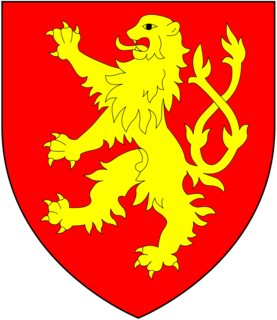
The title of Baron Burghersh has been created three times in the Peerage of England.
Muncy may refer to:
The title Baron Multon de/of Egremont was created once in the Peerage of England. On 6 February 1299 Thomas de Multon was summoned to Parliament. On the death of the second baron, the barony fell into abeyance in 1334.